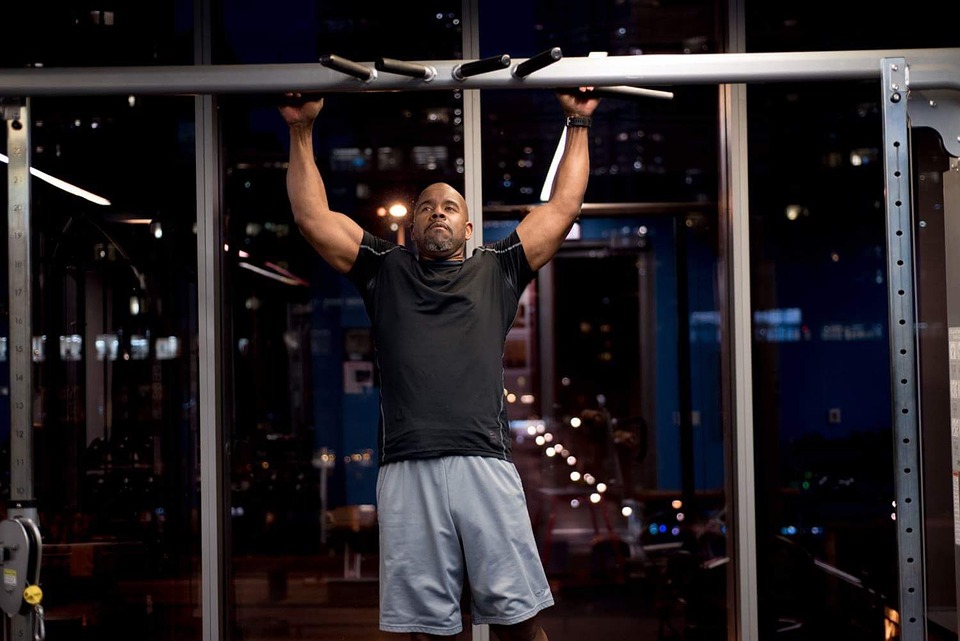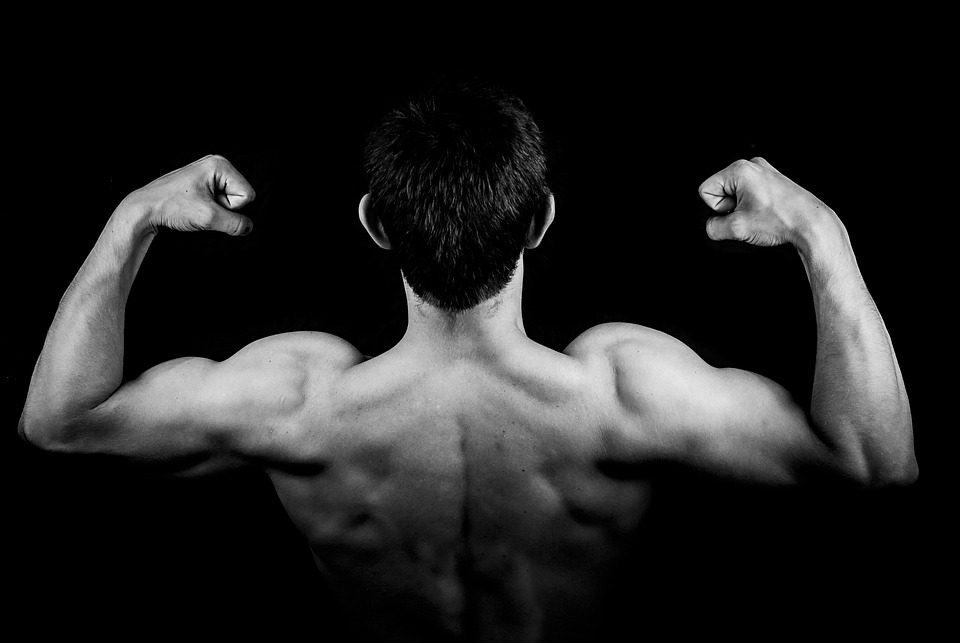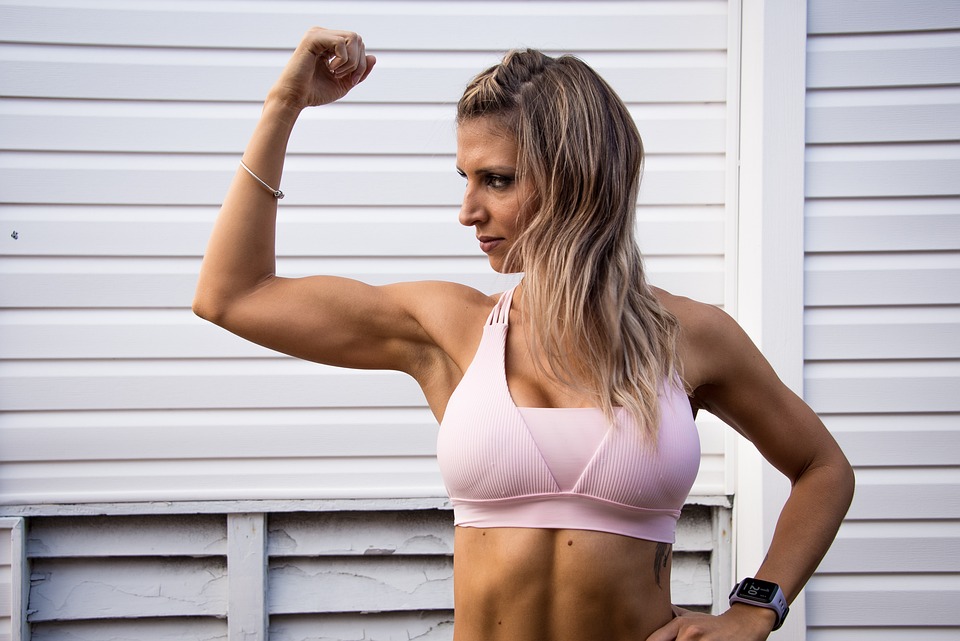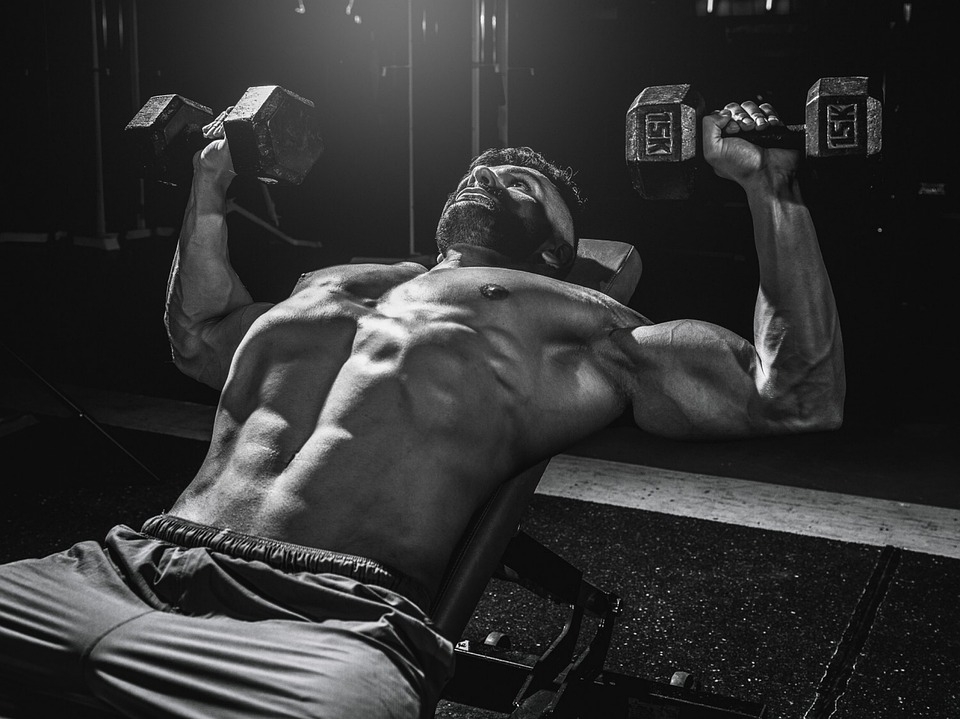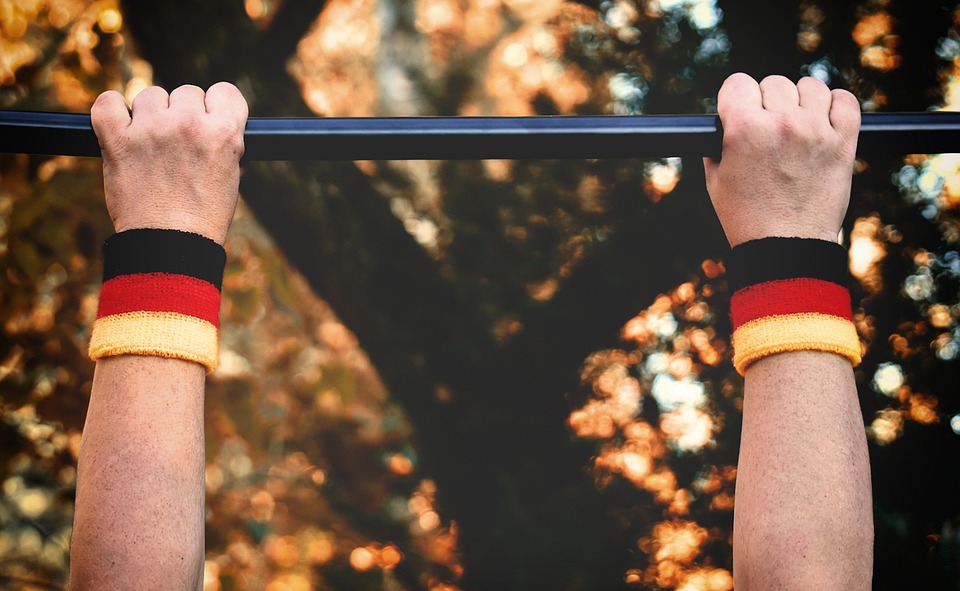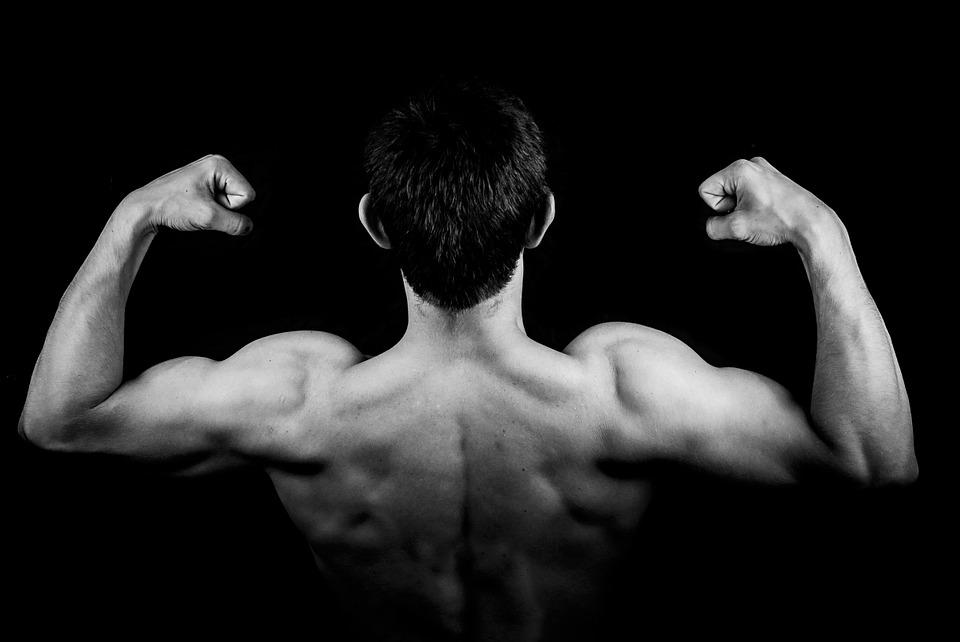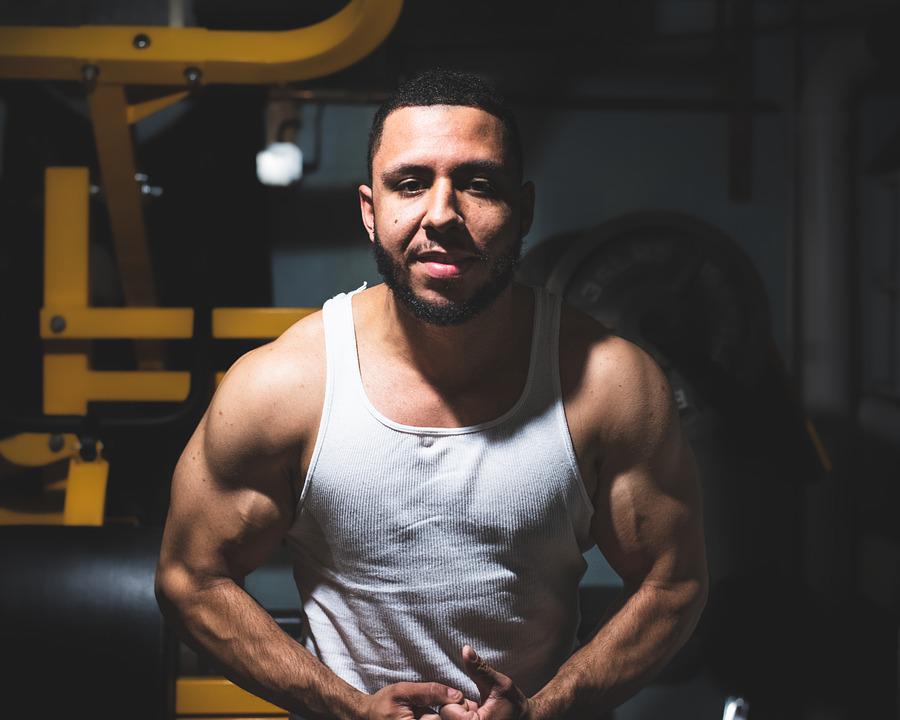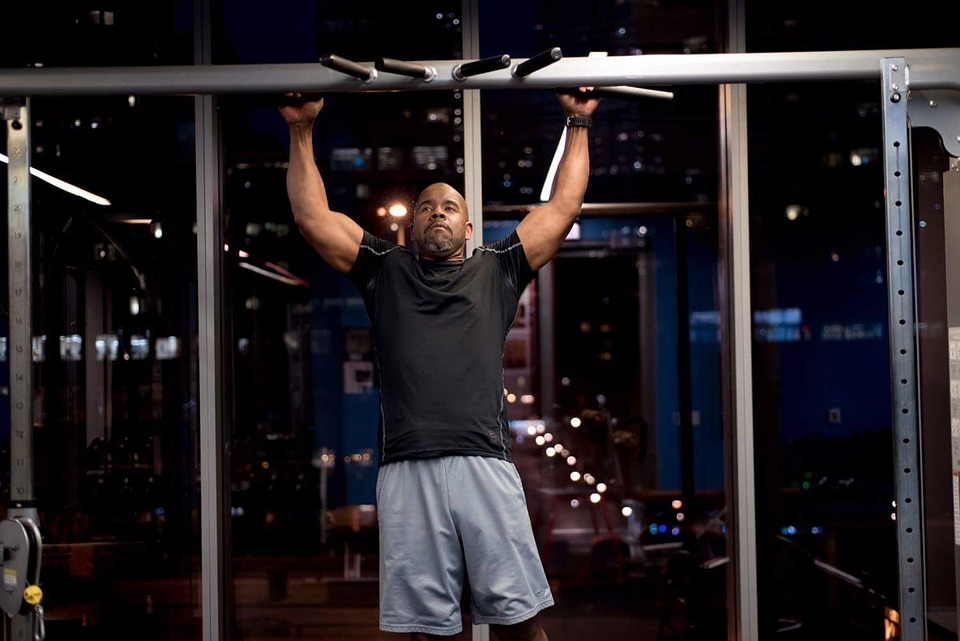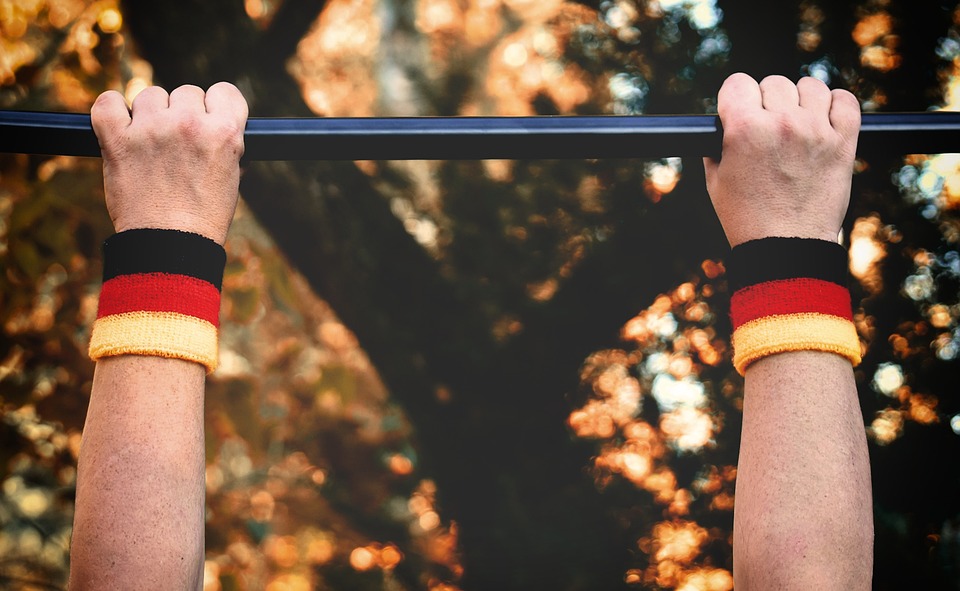
What is a chin-up?
The chin-up is a great exercise for upper body strength and stamina. The move is a dead hang with an underhand grip on a bar, then pulling yourself up using your upper back and biceps muscles until your chin is higher than your hands. After you raise yourself up, lower yourself back down to the start position. Doing this one time is called one rep.
How to Do the Chin-Up
Step 1 — Find Your Perfect Grip
Position yourself underneath a pull-up bar, with your arms down by your sides and your thumbs pointing forwards. Raise your arms straight overhead as naturally as possible. Place your hands on the bar so that they are in line with it, then turn your palms upwards and grip the bar. This is the distance between your hands that is most comfortable and ideal for you, based on the length of your arms and how much your shoulders can move.
While keeping your shoulder blades pulled back, lift your feet off the ground. Cross one foot over the other to engage your abs and prevent your legs from swaying. This will help you to work your abs more effectively and prevent any injuries. Hang from a bar with your arms fully extended and your body weight supported by your arms. Hold your head between your biceps and keep your elbows extended.
A good way to set your grip is to raise your arms overhead and turn your hands so that your palms face forward. If you find it uncomfortable to keep your arms overhead, you may need to adjust your grip width slightly.
Step 2 — Pull Your Chin to the Bar
Take a short breath while keeping your chest tall. To ensure your shoulder blades are pulled back, rotate your shoulders externally. Squeeze the bar and pull your body up to it, keeping your elbows close to your sides.
Think about your biceps and back muscles contracting as you lift yourself up. This has been shown to help improve exercise technique by providing feedback and muscle growth by providing extra nutrients. Breathe out as you raise yourself up, and stop once your chin is at the top of the bar. Your arms should be as straight as possible with your elbows close to your sides.
When performing reps, hold yourself in an isometric contraction at the top of each rep for one to two seconds. A quick glance in a mirror will tell you if your elbows are pointed down to the ground or angled towards your body’s centerline. If your shoulders are pointing straight down, your joints are likely to be healthy and your muscles will be recruited efficiently. Your shoulders are more likely to be strained if they are angled in.
Step 3 — Lower Under Control
Keep your core strong to avoid any swaying. Visualize your muscles lengthening as you descend into the bottom position until both your biceps and back muscles are fully stretched. Do not allow your body to move while hanging from the bar. To maintain control, squeeze the bar tightly and flex your abs.
It’s better to do a few chin-ups with good form than to do a lot with bad form. Reset between each rep as needed so that you are performing them with a high rate of work. Five perfect repetitions are superior to 10 imperfect repetitions.
Chin-Up Mistakes to Avoid
If you want to be efficient when performing each chin-up rep, there are a few technical errors to avoid.
Excessive Swinging
Chin-ups are similar to pull-ups in that they both require you to use your body to stabilize the movement and minimize stress on the shoulder joint. However, if you swing excessively while doing chin-ups, the result will be slightly different.
CrossFit has made kipping pull-ups popular, which use a lot of swinging to complete sets with a lot of repetitions. Swinging during chin-ups internally rotates the shoulders, which increases strain on the shoulder and elbow joints and drastically reduces any muscular tension in the back muscles.
If you want to build muscle or strength, you need to avoid any swinging movements.
You should focus on a one to two-second pause at the top of each rep, making any necessary adjustments to keep your shoulders externally rotated. To do this, get your chest up and shoulder blades back.
Not Using a Full Range of Motion
Some gym-goers only perform a half-rep during chin-ups, meaning they only go halfway down and back up again.
This rushed approach is extremely ineffective. If you only move your weight through a short range of motion, you won’t be providing enough training stimulus to your muscles to help them get stronger or bigger.
Remember to always focus on quality over quantity. Don’t be motivated to lift weights by your ego, and don’t worry about how many repetitions another person may be doing.
Benefits of the Chin-Up
The chin-up exercise is a great way to work your upper body with minimal equipment.
It can help you build strength in your back, chest, and shoulders; improve your posture; and increase the range of motion in your shoulders.
More Muscle for Your Biceps and Forearms
Using a supinated grip changes muscle activation and emphasis. This grip allows you to place a higher load on your biceps while also recruiting your forearm muscles. Chin-ups are a good exercise for the biceps because they can lift relatively heavy loads (their body weight) compared to many other exercises, while the back muscles act secondarily to assist the movement. This makes it an ideal exercise choice for the overall development of the forearms and biceps and for building grip strength.
Functional Hypertrophy and Strength
The chin-up is a functional exercise, which means that by becoming better at it, you will also improve your general physical performance. This can mean that several contact sports, like football, rugby, combat sports, rock climbing, or even swimming, require good coordination. Functional training can also help in your day-to-day lifestyle. A strong back, shoulders, and arms are beneficial for many things such as carrying groceries or kids.
Easy to Progressively Overload
If you want to get stronger and build muscle, you need to do more than you’re used to— lift heavier weights or do more reps. The only thing you need for a chin-up is your body weight. Not a stack of plates, just you. You can achieve 12 controlled reps for three or four sets if you master the bodyweight chin-up.
Lifters may take months or years to achieve their desired level, depending on their training plan. Once you can no longer complete 12 reps with a certain weight, increase the weight of the dumbbell and start back at sets of 12 reps. Repeat the process, gradually increasing the weight each time, and you will see new results.
Muscles Worked by the Chin-Up
Biceps
There are two types of biceps, the long head on the outer side of the upper arm, and the short head on the inner side. The muscle has two parts that both originate from the shoulder blades and attach close to the elbow. The long head of the muscle also crosses the shoulder joint. The underhand grip in chin-ups recruits the biceps more than other grips because the arm is at a mechanical disadvantage in this position.
Forearms
The muscles on the palm side of your forearms, called flexors, and the muscles on the top side of your forearms, called extensors, work together to support your body weight during chin-ups. The muscles that allow you to bend your joints are called flexors. These muscles are activated more when you are pulling something toward the top part of each repetition.
Latissimus Dorsi
The lats are the largest muscles on the back. The tendons attach the upper arm to the spine near the lower back. The muscles in the arms work to bring the arms closer to the body’s centerline, both from above the head and from out to the side. The arm performs both of these motions during a chin-up, making it an effective way to target the lats.
Upper Back
There are several muscles in the upper back that have similar functions, such as the trapezius, rhomboids, and rear deltoids. The muscles work to control movements of the shoulder blades and support the shoulder joints under stress, particularly when doing a chin-up.
Who Should Do the Chin-Up
Training for Bodyweight Strength
In order to get stronger at bodyweight exercises, you must treat strength as a skill. If you want to improve at chin-ups, you need to get better at performing the exercise. Doing repeated sets with the perfect technique will reinforce good habits and help ensure quality over quantity.
Training for Functional Hypertrophy
Functional hypertrophy is a type of muscle growth that is strategic and balanced. It also improves physical performance. The long range of motion and recruitment of multiple muscles make it a highly effective movement. Working the muscles around the shoulder blade through a strong contraction and deep stretch position also builds shoulder joint health.
The best exercises to build chin-up strength
Some assistance exercises you can add to your training program to make you a chin-up champion are ones that increase your upper back and biceps strength and power.
Assisted chin-ups
Why should I do assisted chin-ups?
To perform a chin-up, you must be able to lift your entire body weight. If you are not able to move and manage your entire weight, you can do assisted chins to help offset some of the weight you have to lift. This will gradually help build the upper body strength required to do the main move.
How do I do assisted chin-ups?
This exercise can be done on a machine at the gym that will help support your weight. Just put the pin in the weight stack to choose how much of your body weight you want to balance to make each repetition simpler. If you weigh 80kg and select 40kg on the weight stack, you will only be lifting 40kg of resistance which is 50% of your body weight. You can also use resistance bands in combination with a chin-up bar. To build up your back and biceps strength, offset some of your body weight by looping the band with the desired resistance around the bar and then around your knees or feet.
Underhand lat pulldown
Why should I do underhand lat pulldowns?
The underhand lat pulldown machine is most similar to the bodyweight chin-up exercise. The ability to gradually increase the amount of resistance while performing chin-ups is an excellent way to build back and biceps strength. Some people argue that this is the best exercise to improve your chin-up skills. One reason the machine is great for beginners is that it has very low resistance. Also, people who are more advanced can use the machine to lift weights that are heavier than their body weight.
How do I do the underhand lat pulldown?
Sit on the lat pulldown machine and set the weight to your desired number. To do this exercise, hold a long bar with your hands shoulder-width apart, with your palms facing downwards. Keeping your head up and your back straight, pull the bar straight down, leading with your elbows until your hands are just below chin height. Squeeze your back and biceps muscles hard, then slowly return the bar up until your arms are fully straight. That’s one rep.
Seated row
Why should I do the seated row?
The seated row targets many of the same muscles as the chin-up, including the lats, teres major, rhomboids, biceps, and forearms. However, it does so from a different angle, using a different movement pattern, in order to maximize strength. Don’t forget to change up the way you attach the cables and your grip to work different muscles more thoroughly. There are two popular hand positions for seated rows: a wide grip on a straight bar, or a neutral grip on a curved bar.
How do I do the seated row?
To use this machine, sit on it and grip the bar or handles with the desired grip. Keep your head and chest up, tighten your abs and straighten your back. Row your arms in towards your body, keeping them straight, leading with your elbows. Keeping your back muscles tight, slowly move your arms back to the starting position. That’s one rep.
Cable straight-arm pulldown
Why should I do the cable straight-arm pulldown?
The cable straight-arm pulldown is an excellent move for developing a stronger back. The exercise works the lats (latissimus dorsi) muscle through a very full range of motion. Activating muscle fibers that might not be fully engaged during other back exercises. This exercise also targets the front shoulders and chest muscles through a range of motion.
How do I do the cable-straight-arm pulldown?
Stand tall facing a cable machine holding a straight bar with an overhand grip, or a double-rope handle with a palms-facing grip, secured to the high pulley. Step backward a few paces and lean forward from your hips so your arms are fully extended and you can feel a good stretch in the muscles along the sides of your back. Keeping your chest and chin up and your back straight, move your hands down in a smooth arc until they touch your thighs. Pause at the top of the movement, contracting your lats as hard as you can, then return to the starting position. That’s one rep.

